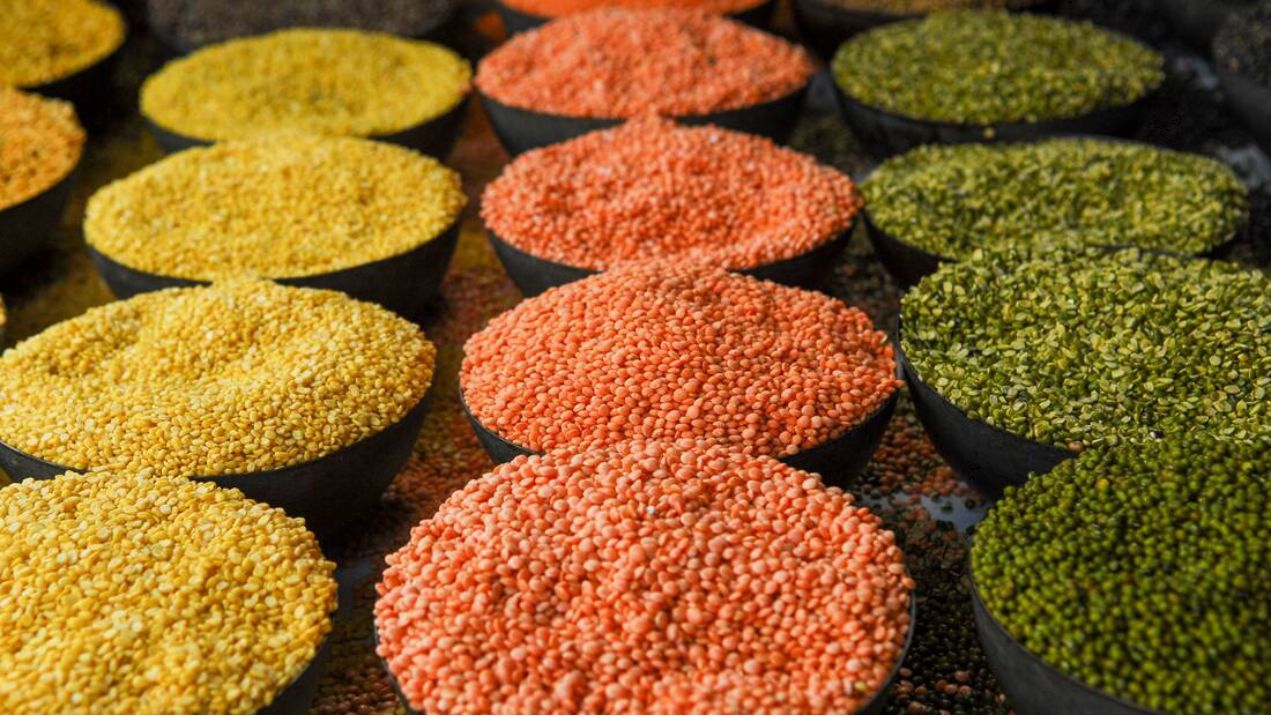Legumes are crops that include lentils, peas, chickpeas, and soybeans, and India is ranked high among countries that both produce and consume legumes. Ideally, pulses or legumes are part of the staple diet across India, and what is more fascinating is that these pulses can fix nitrogen. Currently, the demand for plant protein production is increasing continuously, and the purpose of sustainable agriculture has also made legume farming in India very important.
Now, let us briefly understand the process of legume farming in India, its market value, and its economic prospects.
Importance of Legume Farming in India
Pulses are a very important crop in India from both a nutritional and soil health perspective. They are very rich in proteins, fiber, and minerals and provide a valuable addition to meals, especially among Indians and those who eat vegetarian meals. Legumes can be seen as components in agriculture based on two factors: They are capable of making the soil fertile by fixing nitrogen from the atmosphere. In addition, it minimizes the use of chemical fertilizers in farm and agricultural activities. Hence, the farming of legumes can be described as profitable, not to mention sustainable.
Major Pulses Produced in India
India produces an enormous number of legume crops of various varieties. These include:
Chickpeas (Chana): The highest output legume crop, which is mainly planted in the major states such as Madhya Pradesh, Maharashtra and Rajasthan.
Lentils (Masoor): Made primarily in Uttar Pradesh, West Bengal and Madhya Pradesh.
Pigeon Peas (Arhar/Tur): Sprouted in Maharashtra, Karnataka, and Gujarat. They firmly lie in the diets of most people in India, where pigeon peas are the most commonly consumed pulse.
Mung Beans (Moong): These are grown in large numbers in Rajasthan, Haryana, and the southern state of Tamil Nadu.
Peas (Matar): The major cultivation is confined to Uttar Pradesh, Madhya Pradesh, and Bihar.
Soybeans: Madhya Pradesh and Maharashtra are major soybean-producing states. They have also gained a wide market in edible oil and plant-based protein products.
Cultivation Process of Legume
For high-quality yield, legumes need to be cultivated using the proper method. Let’s learn more in detail :
Land Preparation
Legumes thrive in loamy, well-drained soils with a slightly neutral pH level. The farmer will need to plough and level the soil to facilitate proper penetration by air and moisture. Deep ploughing aids in breaking down levels of compacted topsoils and enhances water infiltration into the soil, which will result in the healthy growth of legume plants.
Modern tractors, like the Mahindra tractor, play a highly important role in soil preparation. With advanced attachments like harrows and tillers mounted on them, farmers can efficiently prepare vast agricultural lands. This, in fact, saves a lot of time and labor-cost money.
Seed Sowing
High-quality seeds are needed for a good yield. Farmers should select seeds that are pest-resistant and resistant to common diseases. Seeds must be certified by some agricultural institutes to avoid any poor results.
The planting of legumes depends on the type of legume crop, but most legumes are broadcast or seeded with seed drills. The Ideal planting depth for legumes would be between 2-4 cm, with the row spacing dependent on the crop.
Indian farmers are now using seed drills for sowing. Seed drills ensure uniform sowing and the right depth, which leads to better germination rates and increased yields. If you’re looking for a tractor with good hydraulics, you must check out Swaraj tractors.
Irrigation and Fertilization
Legume crops can endure drought conditions and, therefore, only need moderate irrigation. The water supply schedule depends on the type of legume, climatic conditions, and the soil’s capacity for water retention. Drip irrigation is among the most effective methods for watering legumes while saving water and delivering it right to the roots of the plant.
Harvesting
The time for harvesting legumes depends on the type of crop. For instance, chickpeas take as long as 100-120 days from sowing, while lentils take 90-100 days to mature. It is also crucial that farmers harvest their legumes when the pods become yellow, wilted, and dry while not breaking and falling off the plant.
Mechanized harvesters can speed up the harvesting process, save labour input for the harvesting operation and minimize crop loss. After harvesting, legumes should be dried to manageable moisture content so that their spoilage is avoided once they are kept in storage.
Market Value and Economic Potential of Legumes
Legumes have high market value primarily because of the increasing demand for proteins in plant form and their essential role in Indian diets. An increase in health benefits and sustainability in farming practices put legumes in greater demand not only in India but across the globe. Factors that may affect the price of legumes include crop yield, demand, weather conditions, and global market trends.
Conclusion
Legume farming in India is one of the promising agricultural business options for farmers who are now seeking crop diversification for better profitability. Legumes are of high nutritive value, and replenishing the soil ensures sustainable agriculture in India and attracts a huge market. Modern Machinery like Sonalika tractors are designed to increase productivity while also improving profit margins for farmers.
With proper planning, investment in good seeds and equipment, and support from the government, Indian farmers may continue to succeed in legume farming, which would, in turn, improve their livelihoods and national food security.


